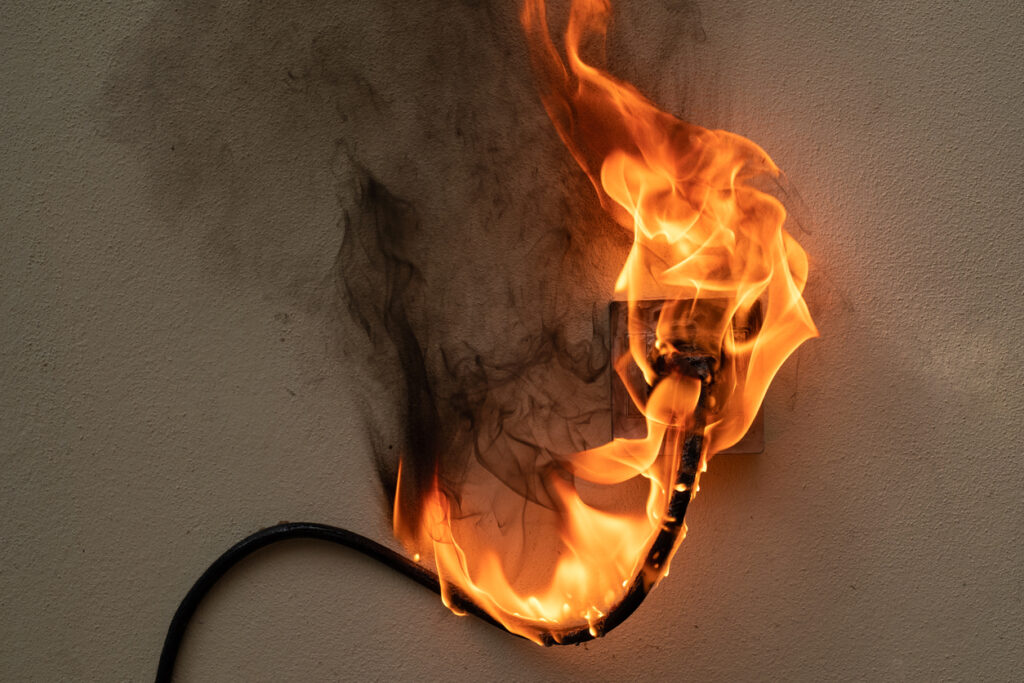Electrical hazards are a serious issue. The most dangerous ones come from electrical fires that can destroy homes. Shocks and electrocutions are also a serious concern. Sadly, while the danger of electrical accidents is well known, many people are not aware of steps they can take to prevent them. Or they simply do not bother because they feel it is too complicated or they lack the appropriate knowledge and skills.
1. Childproof Your Outlets
Kids are naturally curious, and they love to touch everything. They are also developing their motor skills. These two characteristics of children make them very prone to coming into contact with electrical outlets. They may put small toys, jewelry, or other objects into outlets. This contact can result in electric shocks, which may prove fatal.
To protect your little ones from the dangers of these outlets, you should childproof them. You can use outlet covers or put tape over the opening of outlets that are beside furniture and other objects your kids can climb on top of.
2. Install GFCI Outlets
A ground fault circuit interrupter (GFCI) outlet senses the presence of an electrical imbalance and immediately cuts off the flow of electricity. GFCI outlets are commonly found in bathrooms, kitchens, garages, and other wet spaces. These outlets are very effective at preventing electrocution due to contact with water.
While GFCI outlets are very effective, they may fail in some cases. Always test them regularly. A reputable electrician can help you to install, troubleshoot, and maintain your GFCI outlets. When buying, choose an outlet that meets national standards. Such outlets are recommended by safety authorities.
3. Investigate Flickering Lights
Sometimes, the lights in your home can go on and off by themselves. This is often accompanied by a buzzing in your electric system. Never ignore these sounds, as they can signify many serious problems. Contact an electrician right away.
The most common issue behind flickering lights is faulty wiring. You may also have a problem with a switch or light fixture. Regardless of its cause, it is always best to address the problem immediately.
4. Keep Electrical Cords Neat
Electrical cords are used for various things, such as charging small electronic devices, appliances, and lighting. Keeping electrical cords neat can prevent them from becoming tangled, broken, or damaged. Untidy cords can also present a tripping hazard.
Use cable ties to wrap cords together and keep them in place. If you must pass a cord through an opening, anchor the cord with a carabiner or some other fastening mechanism. Secure power cords to the wall using cable clips. You can also use cord covers to hide them from view and protect them from damage.
5. Do Not Leave Appliances on When Not in Use
Appliances like ovens, TVs, and laptops draw some power even when not in use. This can result in high electricity bills and unnecessary wear and tear on your appliances. Leaving appliances on when not in use can also result in fire hazards or electric shocks should something go wrong. Unplug these appliances from your electrical system when you are not using them to prevent these issues.
You can also use timers to automate the turning off of your appliances. The rule of thumb is to turn off appliances and electronic devices when you will not use them for at least 15 minutes. This can also help you to save some money on energy bills.
Electrical hazards can be virtually eliminated when you are careful. Never overlook any electrical safety issues, as they can become severe problems if left unaddressed. Contact Legacy Electric in San Angelo, TX for electrical upgrades and other electrical services. Our electricians follow all applicable safety standards and offer quality customer service.

